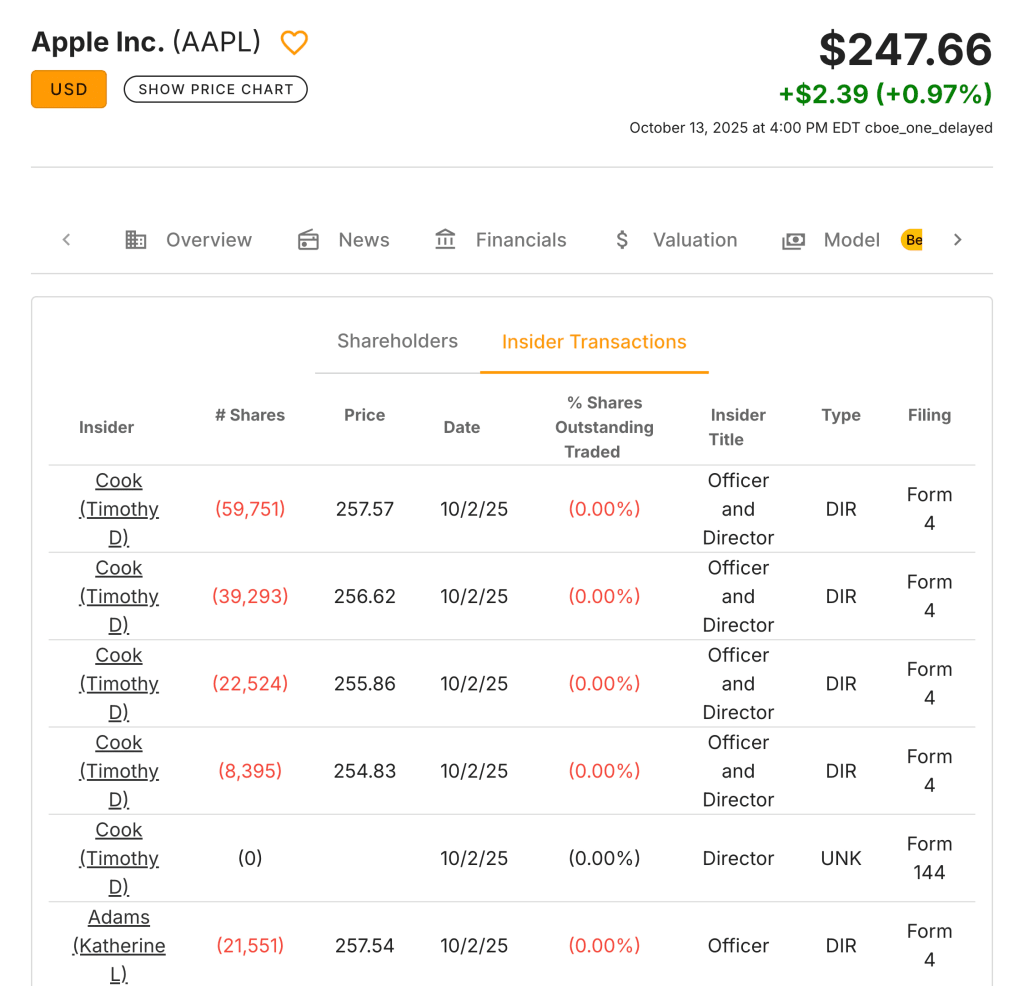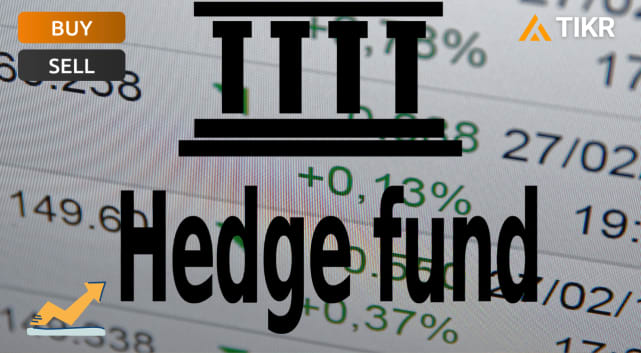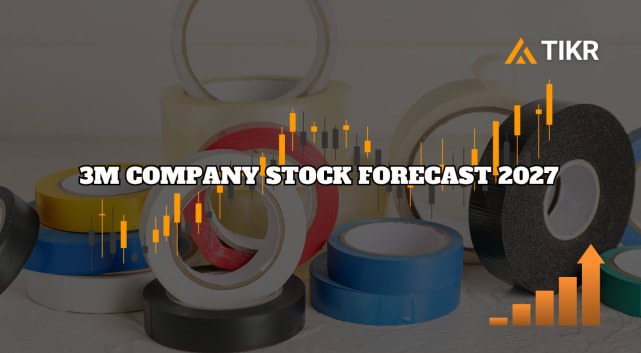When CEOs, CFOs, or board members buy their own stock on the open market, it often signals one thing: confidence. They know the company better than anyone, and when they put personal capital on the line, investors take notice. But following insider trades intelligently requires more than scrolling headlines or X (Twitter) threads, it means separating meaningful signals from routine transactions and understanding what those moves actually say about the business.
That’s where the right tools come in. The SEC requires insiders to disclose trades within two business days using Form 4 filings, creating a goldmine of transparent data available to everyone. But raw filings alone can be confusing: some sales are tax-related, some purchases are symbolic, and some are genuine long-term bets. The difference lies in context, timing, scale, valuation, and company performance.
The five free resources below will help you not only track insider buying and selling but also interpret those moves correctly. At the heart of this workflow is TIKR, which provides investors with a broader financial picture, including margins, cash flow, debt, and valuation trends that help determine whether insider activity actually signals opportunity.
1. TIKR – The Core Platform for Context
TIKR is the cornerstone of smart insider-trade analysis. It aggregates company financials, valuation metrics, ownership data, and activity for over 100,000 global equities, making it the ideal companion to raw insider filings. Instead of just seeing who bought or sold, you can immediately understand why it might matter based on the company’s financial trajectory.
The magic of TIKR lies in connecting insider data to fundamentals. Say you discover a CEO buying after a sharp drawdown, open the stock in TIKR, and you can instantly check whether the business is improving under the surface: rising free cash flow, expanding gross margins, or debt coming down. Likewise, if multiple insiders are selling at near-historically high valuation multiples, TIKR helps you see whether that behavior aligns with stretched fundamentals or is simply diversification.
Here’s how to use it effectively:
- Move to Ownership to view insider transactions.
- Check financials to confirm whether operating strength supports insider sentiment. When you combine insider trades with TIKR’s financial clarity, you stop guessing, you start analyzing.

Look up insider transaction info in less than 60 seconds with TIKR (It’s free) >>>
2. SEC’s EDGAR – The Official Source of Every Insider Trade
All insider data originates from one place: the SEC’s EDGAR database. It’s where every Form 4 is filed, usually within two business days of a transaction. These filings list the insider’s name, title, transaction date, number of shares, price, and ownership before and after the trade, the most direct window you’ll ever get into what company executives are doing with their own stock.
The advantage of EDGAR is that it’s official, timely, and complete. No other platform filters or summarizes it before you see it. Learn to read the codes, and you can instantly tell what’s happening: “P” stands for an open-market purchase (typically bullish), while “S” signals a sale. Context like “A” (grant) or “M” (option exercise) indicates compensation-related transactions, which are less meaningful for signaling confidence.
Practical workflow:
- Visit sec.gov → search by company name or ticker.
- Filter results to Form 4 filings.
- Open recent reports to view transaction types, sizes, and changes in ownership. Once you confirm the raw data, plug the same ticker into TIKR to interpret it in context. EDGAR gives you facts; TIKR gives you meaning.
From Disclosure to Decision: Why Verification Matters
Headlines often oversimplify insider activity. “CEO sells $2 million of stock” sounds ominous, until you realize it’s a pre-scheduled sale that barely changes ownership. Reading the filing yourself (and pairing it with TIKR’s ownership tab) ensures you distinguish between signal and noise.
3) OpenInsider – The Real-Time Insider Screener
If EDGAR is the source, OpenInsider is the lens. It’s a free, real-time screener that aggregates Form 4 filings the moment they hit the SEC database, categorizing them by insider title, transaction type, price, and size. The interface may be simple, but it’s fast, and it gives you a bird’s-eye view of insider sentiment across the market.
OpenInsider’s biggest strength is speed and visibility. You can see which insiders are actively buying or selling across sectors, then sort for only open-market “P” purchases (the ones that matter most). When you see multiple executives from the same company buying within days of each other, that’s a potential signal of confidence in upcoming results. By pairing those signals with TIKR’s valuation and ratio analysis, you can determine whether insiders are acting on improving fundamentals or simply on opportunistic timing.
Here’s how to use it:
- Go to openinsider.com → select “Latest Insider Buys.”
- Filter by open-market buys and insider role (CEO/CFO, etc.).
- Sort by dollar amount or percentage of ownership change to find high-conviction trades. OpenInsider points you to the trades worth studying; TIKR helps you decide whether they’re worth following.
Quickly find undervalued stocks with TIKR (It’s free) >>>
4. FINVIZ – Quick Insider Snapshots With Visuals
For investors who like visuals, FINVIZ offers a clean, accessible overview of insider trades that’s easy to scan. Its Insider tab lists recent transactions with color-coded buy and sell indicators, insider roles, and the total value of each trade. Unlike raw EDGAR filings, FINVIZ presents insider data in a way that makes patterns easier to spot, ideal for quick checks during daily market reviews.
What makes FINVIZ particularly useful is its integration of insider data with other stock metrics. You can view insider buying alongside key valuation ratios, technical setups, and price charts, helping you see the broader market picture at a glance. For example, a stock showing heavy insider buying near long-term support levels may be a stronger buy signal than one at all-time highs.
For a fast workflow:
- Visit finviz.com → click the “Insider” tab.
- Scan for clusters of insider buys or unusually large transactions.
- Cross-check each ticker in TIKR to evaluate fundamentals and ownership trends. Think of FINVIZ as the quick radar sweep, a way to spot patterns worth deeper analysis elsewhere.
From Patterns to Performance: Seeing the Bigger Picture
Individual trades tell part of the story, but patterns tell the rest. When you see multiple insiders buying after a prolonged downtrend or near cyclical lows, use TIKR to confirm whether the fundamentals are stabilizing. Context transforms coincidence into insight.
5. MarketBeat Insider Trades – Simple, Structured Summaries
MarketBeat rounds out the list by providing a simple, readable summary of insider trading activity. The site’s Insider Trades section aggregates recent transactions, showing total shares, transaction value, insider role, and a short trend summary (e.g., “Net Insider Buying”). It’s not as fast as OpenInsider, but it’s far more approachable for newer investors who prefer plain-language summaries.
MarketBeat’s advantage lies in trend aggregation. You can quickly see whether a company’s insiders have been net buyers or sellers over the past 90 days, a valuable snapshot for spotting sentiment shifts. When combined with a TIKR deep dive, this overview helps confirm whether the recent trading behavior aligns with improving fundamentals or signals potential caution.
To integrate it into your routine:
- Visit marketbeat.com/insider-trades/ → search by ticker or browse latest updates.
- Look for clusters of insider buys or net-buying trends over several weeks.
- Use TIKR to confirm whether those trades coincide with improving returns or undervalued multiples. MarketBeat won’t replace EDGAR, but it’s a solid complement when you want a digestible summary of market-wide insider sentiment.
The 3-Step Workflow (Use This Every Time)
- Start in TIKR: Begin by opening the Company Overview → Ownership → Insider Transactions section in TIKR. You’ll see recent insider buys and sells, complete with trade size, date, and insider role.
- Confirm the details: Once you find an activity that stands out, use TIKR’s direct filing links to open the official Form 4 on the SEC’s EDGAR database. Check that it’s an open-market purchase (code “P”) rather than a stock grant or option exercise. Verified filings eliminate guesswork and keep you focused on genuine conviction trades.
- Put it in context: Back in TIKR, pivot to the Valuation and Detailed Financials tabs. Compare how revenue growth, margins, and free cash flow are trending relative to peers. If insiders are buying while fundamentals are improving and valuation remains below historical averages, that’s a powerful combination—what professionals call an asymmetric setup.
This workflow keeps everything inside the TIKR ecosystem, data discovery, verification, and analysis, so you’re responding to verifiable, data-backed signals, not noise from unverified trade alerts.
See which stocks have insider buying with TIKR (It’s free) >>>
TIKR Takeaway

At the heart of insider-trade research is context, and that’s what TIKR delivers better than anyone else. It transforms fragmented filing data into a clear, cohesive view of how a company is performing, and whether insider sentiment aligns with the numbers.
With valuation history, ownership updates, margin trends, and cash-flow data all in one dashboard, you can move from “a CEO just bought stock” to “this company looks fundamentally strong” in seconds.
With professional-grade financials, peer comparisons, and historical valuation charts, TIKR gives individual investors the same analytical advantage that institutions rely on. The result is a research process grounded in evidence, not emotion, and that’s what separates speculation from strategy.
AI Compounders With Massive Upside That Wall Street Is Overlooking
Everyone wants to cash in on AI. But while the crowd chases the obvious names benefiting from AI like NVIDIA, AMD, or Taiwan Semiconductor, the real opportunity may lie in the AI application layer, where a handful of compounders are quietly embedding AI into products people already use every day.
TIKR just released a new free report on 5 undervalued compounders that analysts believe could deliver years of outperformance as AI adoption accelerates.
Inside the report, you’ll find:
- Businesses already turning AI into revenue and earnings growth
- Stocks trading below fair value despite strong analyst forecasts
- Unique picks most investors haven’t even considered
If you want to catch the next wave of AI winners, this report is a must-read.
Click here to sign up for TIKR and get your free copy of TIKR’s 5 AI Compounders report today.
Looking for New Opportunities?
- Discover which stocks billionaire investors are purchasing, so you can follow the smart money.
- Analyze stocks in as little as 5 minutes with TIKR’s all-in-one, easy-to-use platform.
- The more rocks you overturn… the more opportunities you’ll uncover. Search 100K+ global stocks, global top investor holdings, and more with TIKR.
Disclaimer:
Please note that the articles on TIKR are not intended to serve as investment or financial advice from TIKR or our content team, nor are they recommendations to buy or sell any stocks. We create our content based on TIKR Terminal’s investment data and analysts’ estimates. Our analysis might not include recent company news or important updates. TIKR has no position in any stocks mentioned. Thank you for reading, and happy investing!








